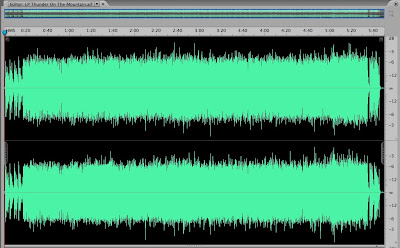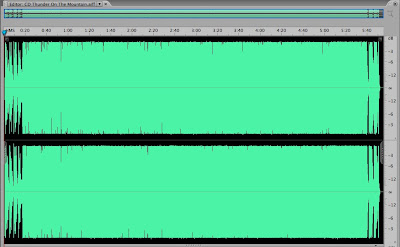So why is, then, that D is such a boring chord? To answer that, I’ll have to give you some theory. You probably don’t mind, since you’re going to rest your fingers a little while longer anyway.
“Grau ist alle Theorie”
If you think theory is boring, think again. Think of it, not as something you have to know in order to do something right (as most schools teach grammar, e.g.), but as a way of explaining what it is that you already know.
All chords belong together in families — the famous three chords, plus relatives and friends. Every song, at least in the popular music repertory, has a keynote (also called the ‘tonic’, hence abbreviated T), the main tone or chord around which the song revolves. This is almost always the tone/chord on which the song ends, and most frequently the tone/chord on which it begins, but that is not always the case. It is safest to go by the end. A song in C major ends on a C major chord, etc. The keynote represents the stable level from which everything develops and to which it all returns.
In addition to the keynote, there are two different functions: that of extension, and that of tension. They are represented by the tones (and the chords built over these tones) a fifth and a fourth above the keynote, respectively. They are called the dominant and the subdominant.
The dominant (D) is the stable, loyal companion to the keynote, always there, not without its conflicts, but they are always resolved, and always in favour of the tonic – somewhat like a good old (or bad old, depending on the perspective) patriarchal marriage. In fact, one might consider all music within the western musical tradition (until the late nineteenth century in the art-music tradition, and until this day in the popular traditions) as nothing more than a play with the balance between these two scale steps. The dominant is there to generate tension, which is then resolved by the keynote.
The subdominant (S) usually stands a little behind the other two in the lineup – doesn’t have the self-conscious power of the tonic, nor the rebellious subservience of the dominant. It has a double role. Partly it is a chord closely related to the tonic, in many cases hardly more than a variant of it. In this capacity, it functions as a reenforcement of the tonic. But it also has a more expansive role, as the first step away from the tonic, especially in combination with the dominant, in some kind of cadential progression. The mother of all such cadences, at least in text books, is T–S–D–T (the beginning of ‘Blowin’ in the Wind’ is an example). The dominant creates a tension which demands a resolution, back to the tonic, and the subdominant is a helper on the way to get there, roughly speaking.
What does this mean in practice, then? A few examples are in place, before you can go on to play them yourself.
Tom Dooley has two chords: the keynote (tonic) and the dominant. In this case, the tonic is D, the dominant A7. The musical “story” of the song thus is a simple one: Establishing the key; deviation; return. This is the basic structure of every tune you are ever likely to play. (Avant garde genres in classical music do what they can to eschew this pattern; the question is if they can ever succeed).
The beauty of it is that almost no matter how long one holds the A7, it will retain the memory of the keynote, and the urge to get back there will be stronger the longer it is sustained.
The Talking Blues genre is a perfect illustration of this flexibility, this time with the Subdominant taking part in the play. See e.g. “Talkin’ World War III”, where the buildup to the climax in the verses is accompanied — literally — by a gradual escalation through the S and D steps, which can be stretched almost indefinitely, to accomodate verses of different length, until the final resolution to the keynote and the textual punchline, to great effect. This is most clearly seen in the last verse, where the “half the people … some of the time” lines are finally released by “‘I’ll let you be in my dream if I can be in yours.’ I said that” — the young Dylan’s greatest punchline.
The legendary three-chord chords
To summarize: all songs have a primary key, and two main secondary steps. Just about every chord in any song in the popular music repertory can be reduced to one of the three chord steps. Thus, in theory it would be possible to learn only three chords and play everything with those. In practice, it’s a little more complicated, but the fact remains that three chords is enough to play 90% of popular songs satisfactorily.
The three chords in the most common keys, are:
+------------------------------------+ | Keynote | Dominant | Subdominant | |----------+-----------+-------------| | C | G | F | | D | A | G | | E | B | A | | G | D | C | | A | E | D | +------------------------------------+
The Third Chord: G
With the G major chord, we have the full trio of chords in the key of D. Its basic form is:
G major 000 ====== |||||| ------ |1|||| 320003 ------ 2||||3 ------ ||||||
Beginners will face two problems here: it’s a bit of a stretch since it covers everything from the first to the sixth string; and it doesn’t share any fingers or finger positions with D or A7.
For now, this can be remedied with some cheating: leave out the two bass strings and play only xx0003. Then G goes from being the beginner’s first hurdle, to being almost the easiest chord in the book. You should not get into the habit of playing it like that, of course (and eternal damnation on you if you do), but it will allow you to play more interesting songs with fairly more ease. Why not the campfire classic “Blowin’ in the Wind”?
Blowin’ in the Wind
D G A7 D
How many roads must a man walk down
D G D
Before you call him a man?
D G A7 D
How many seas must a white dove sail
D G A7
Before she sleeps in the sand?
D G A7 D
How many times must the cannon balls fly
D G D
Before they're forever banned?
G A7 D G
The answer, my friend, is blowin' in the wind,
G A7 D
The answer is blowin' in the wind.
G, it’s good to see ya!
You need not pay much attention to what I’m about to say here at this stage, but if you need a break from Blowin’:
If D is my hate chord, G is the chord I love the most. It is full-bodied and versatile where D is thin and limited. I will save the full explanation for later, but if you know how to master the G major chord, you are a huge step towards mastering the guitar itself.
There are many ways to finger G. The form I’ve given above, with the index, middle and ring fingers, is usually favoured by beginners, because the alternatives all involve the pinky, which may be a bit awkward to use at this point:
G major, variant fingerings 000 000 00 ====== ====== ====== |||||| |||||| |||||| ------ ------ ------ |1|||| |2|||| |1|||| ------ ------ ------ 2||||4 3||||4 2|||34 ------ ------ ------ |||||| |||||| ||||||
It may come as a surprise if I say that the middle form is the preferred, the goal you should work towards. Why bother putting that huge span over all the strings between the ring finger and its little brother when there are so much easier ways to do it?
It has to do with sonority and versatility. The rightmost version above does not just use different fingers, but has different tones as well, and it gives a different sound (incidentally, this is the chord shape that is used in The Times They Are A-Changin’ and which gives the special sound of that song). It it good to be able to vary the sound, and being used to using the little finger makes it easier to play this variant chord.
The second reason is a little further ahead in time, but I’ll mention it already now, to give you an idea where you’re heading. If you use the fingering in the middle, you have a space defined by the outer strings, and between them there are four wonderful strings that you can play melodies and fills on while still playing the basic chord, and two wonderful fingers (index and middle) that are free to play them, in exactly the right area. This is what makes G such a unique chord, and it’s no coincidence that many of Dylan’s greatest acoustic songs are in the key of G (Times; Girl from the North Country/Boots of Spanish Leather; It ain’t me, Babe; Blowin’ in the Wind, which actually uses chords from the G major family, although it is sounding in D major; Knockin’ on Heaven’s Door; You ain’t going Nowhere; etc.), and Dylan uses the “awkward” fingering with long, ring and middle fingers — so why shouldn’t you?
Compare what I’ve said about G with the D chord: three fingers are in use, in a rather fixed position; besides, since you are avoiding two strings, there isn’t much of a space to move in.
Further songs
Here are two more songs to practice on. First the definition of “bittersweet”: “To Ramona” off Another Side of Bob Dylan.
D
Ramona, come closer
A7
Shut softly your watery eyes
The pangs of your sadness
D
Will pass as your senses will rise
G
The flowers of the city
A7
Though breathlike, get deathlike sometimes
And there's no use in tryin'
To deal with the dyin'
D
Though I cannot explain that in lines.
(For the rest of the verses, see dylanchords).
Then one of the gems from his lastest effort, Christmas in the Heart:
D
Come they told me, pa rum pa pom pom
A new born King to see, pa rum pa pom pom
A7
Our finest gifts we bring, pa rum pa pom pom
D G
To lay before the King, pa rum pa pom pom,
D A7
rum pa pom pom, rum pa pom pom
D
And so to honor Him, pa rum pa pom pom,
A7 D
When we come.
If this is not enough, you may take it as an exercise to find other songs and see how you can make them work with your three chords. Everything will not work, but most blues-based songs will.
Try to use the full version of G, but you are allowed to cheat. For now.
All the Lessons
[catlist name=Lessons numberposts=150 order=asc orderby=date excludeposts=419]
 the cheapest ones fasten with a piece of elastic or nylon. The elastic models cost less than a beer, but are also the weakest, so they may not be able to press down all the strings with the necessary pressure and thus produce a buzzing sound. Besides, they will break, eventually. If you want to stay in the cheaper range, go with the nylon model to the left.
the cheapest ones fasten with a piece of elastic or nylon. The elastic models cost less than a beer, but are also the weakest, so they may not be able to press down all the strings with the necessary pressure and thus produce a buzzing sound. Besides, they will break, eventually. If you want to stay in the cheaper range, go with the nylon model to the left.  The spring based model is more expensive. Many players love this kind. I don’t. Tastes differ. For what it’s worth, I use the lever-operated, no-frills capo to the right: it does what it’s supposed to do, and it will last forever.
The spring based model is more expensive. Many players love this kind. I don’t. Tastes differ. For what it’s worth, I use the lever-operated, no-frills capo to the right: it does what it’s supposed to do, and it will last forever. I have no idea, and I don’t care (there is only one song that has made me wonder what he thinks in this area, but it’s not on Christmas in the Heart). What I do know is that the lyrics to “Here Comes Santa Claus” in the version that Dylan sings is a most fascinating mix of symbols. From the “jingle bells” intro with the smooth, soft jazz choir, and through the first two verses, it’s classic American pop culture Christmas all the way, with reindeer, stockings and toys.
I have no idea, and I don’t care (there is only one song that has made me wonder what he thinks in this area, but it’s not on Christmas in the Heart). What I do know is that the lyrics to “Here Comes Santa Claus” in the version that Dylan sings is a most fascinating mix of symbols. From the “jingle bells” intro with the smooth, soft jazz choir, and through the first two verses, it’s classic American pop culture Christmas all the way, with reindeer, stockings and toys.





